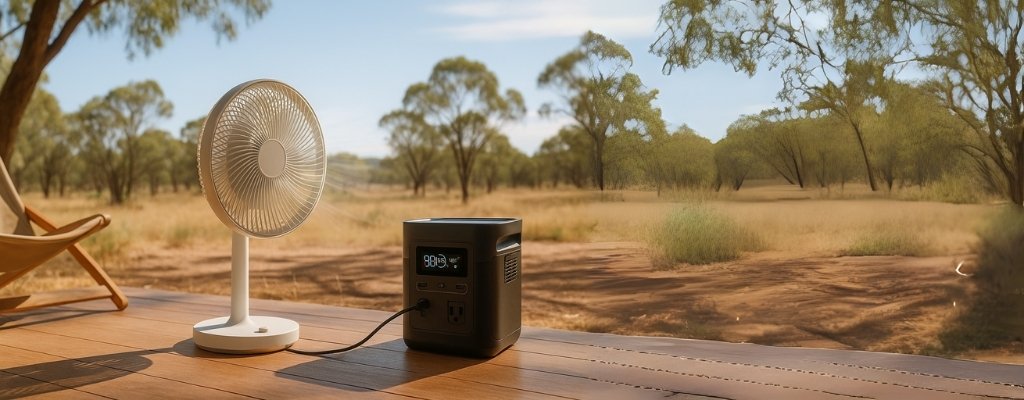
How Long Will a Portable Power Station Run a Fan?
Heading off-grid or preparing for summer outages? A portable power station paired with a fan can be the difference between a sweaty struggle and a cool, breezy night’s sleep. Here's how to figure out just how long your setup will last.
Not sure which power station is right for you?
Take the quiz!
How a Portable Power Station Keeps Your Fan Running
Understanding Fan Wattage and Power Draw
Different fans pull very different amounts of power. A compact USB fan might sip just 5 watts, while a full-size pedestal fan can draw over 50 watts. The higher the wattage, the faster it drains your battery. Always check your fan's label or specs before plugging in.
Know Your Portable Power Station’s Battery Capacity
Your power station’s capacity is measured in watt-hours (Wh). This number tells you how much energy is stored. A 500Wh battery powering a 50W fan will theoretically run for 10 hours—but expect a little less in real-world conditions due to inverter losses and efficiency factors.
Fan Speed Settings and Power Efficiency
Lower speed settings reduce power consumption significantly. Running your fan on low or medium speed can help stretch your portable power station’s battery life overnight—without sacrificing comfort.

How Long Will a Portable Power Station Run a Fan?
Using the Runtime Formula
The basic rule of thumb is: Power Station Capacity ÷ Fan Wattage = Estimated Runtime. For example:
- USB Fan (5W): 500Wh ÷ 5W = approx. 100 hours
- Table Fan (20W): 500Wh ÷ 20W = approx. 25 hours
- Pedestal Fan (50W): 500Wh ÷ 50W = approx. 10 hours
Keep in mind that this doesn’t account for inverter losses, which typically reduce efficiency by 10–15%.
Other Factors That Affect Runtime
Ambient Temperature
Warmer conditions make your fan work harder—and you’ll likely run it longer too.
Battery Health and Efficiency
Older batteries won’t hold charge as well. Also, lithium-ion cells tend to perform better in moderate temperatures.

Best Practices for Using a Portable Power Station with a Fan
Choose an Efficient Fan
Fans with high airflow-to-wattage ratios are ideal. Look for models that highlight energy efficiency in their specs—especially if you’re running off-grid overnight.
Use Strategic Placement and Settings
Point your fan toward shaded areas or at tent entrances. Use oscillating or directional modes to optimise cooling without maxing out speed settings. Less wattage, better airflow—that’s the goal.
You might also like:
- Can a Portable Power Station Run a Refrigerator?
- Can Portable Power Station Be Used as UPS?
- Can You Charge a Portable Power Station With a Solar Panel?
- Do You Need a Charge Controller for a Portable Power Station?
- What Is the Difference Between a Solar System and a Portable Power Station?
- Where Can I Buy a Portable Power Station?


